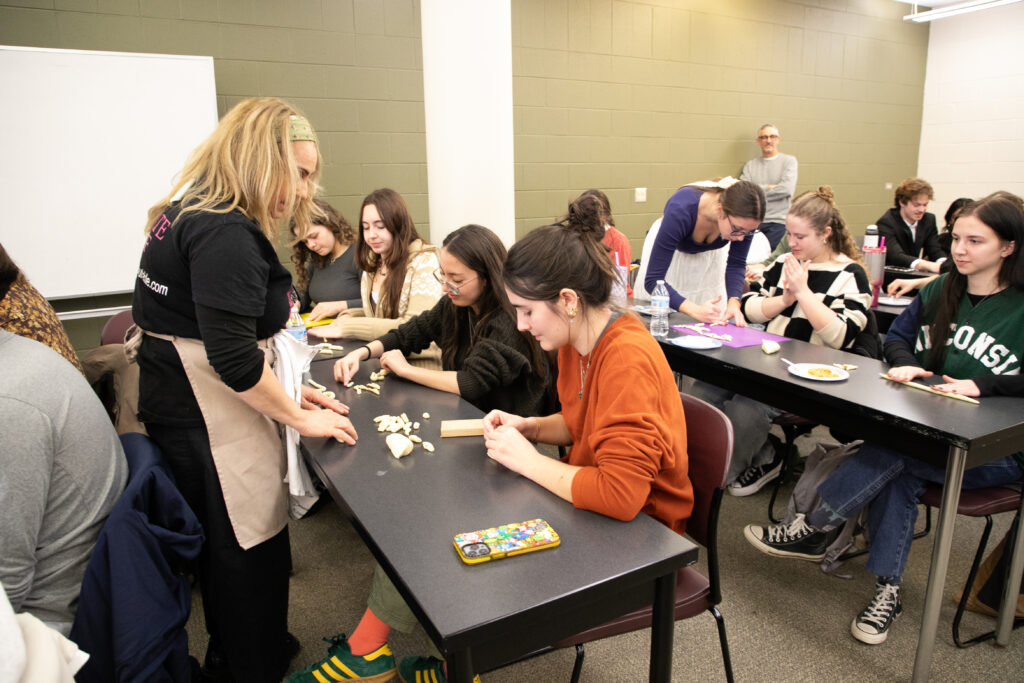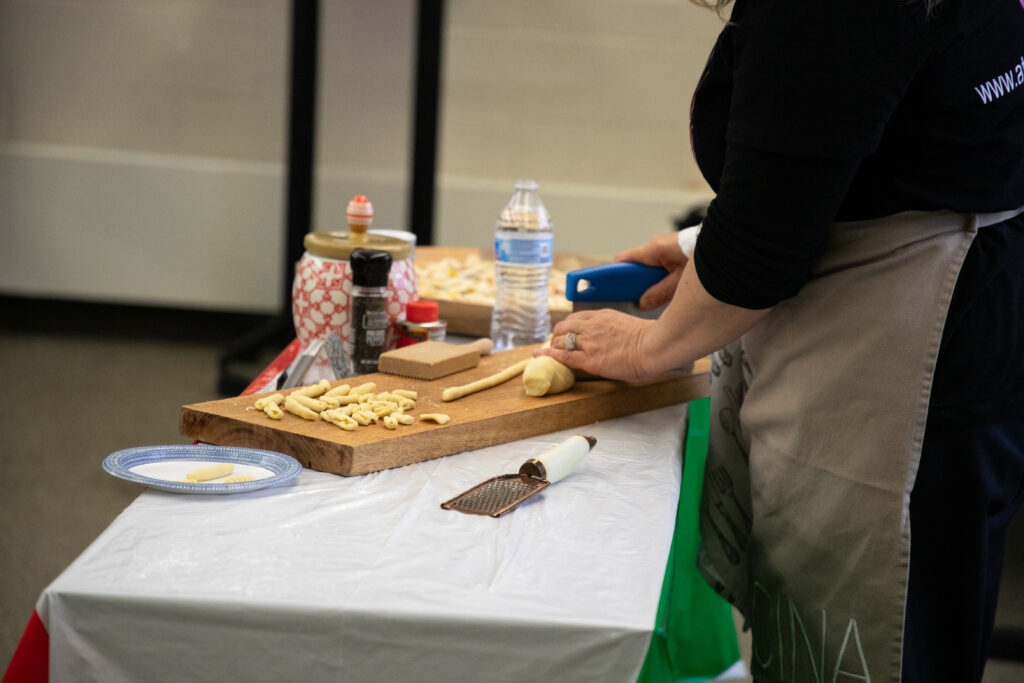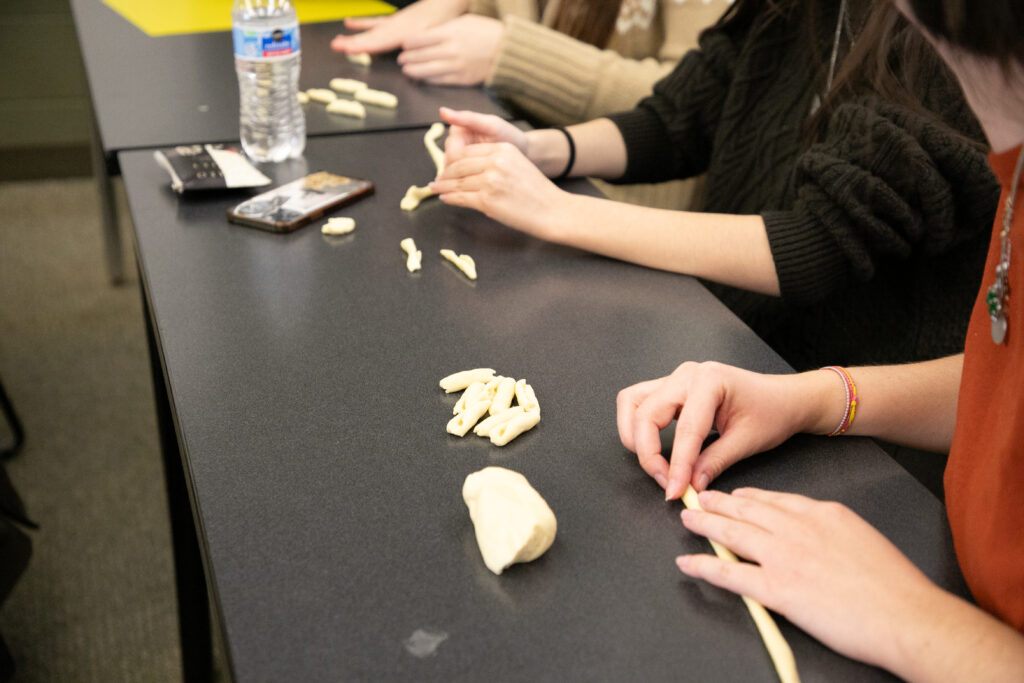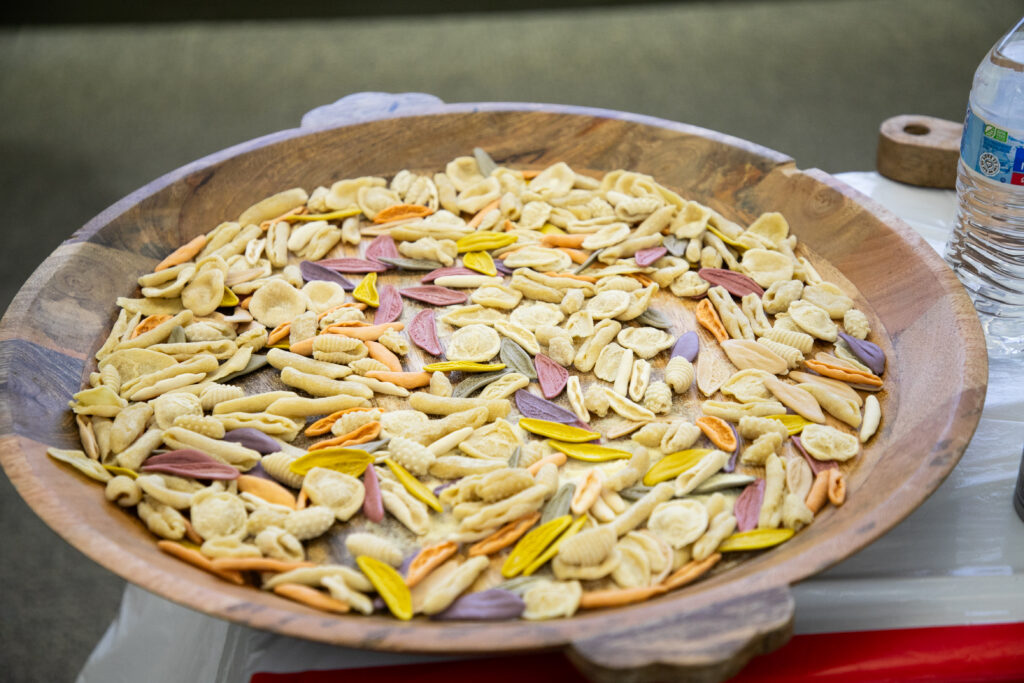Loyola’s Italian Department hosted a class to teach home cooking and Italian tradition.
Knead, Roll and Savor: Bringing Italy to Loyola
Students traded their notebooks for aprons as they packed into the tiny Room 210 in Crown Center. The scent of fresh tomatoes, garlic and herbs transformed the space into a cozy Italian kitchen.

The Italian Department hosted a cooking class led by private chef Rossella Martinello. The class brought the essence of Italy to Loyola students and Martinello showed them how to make a grandiose dish out of simple elements.
“A lot of people travel to Italy, try a dish, love it, but when they come home they don’t know how to recreate it,” Martinello said. “My goal is to show them how to make these dishes at home. It’s not complicated — anyone can recreate it by enjoying the process and being simple.”
Martinello demonstrated how to knead the dough and turn it into different shapes with two simple ingredients — flour and water. She also explained how to make sauce from olive oil, garlic and fresh tomatoes.
The tactile experience of kneading dough and slicing it into ribbons can be therapeutic, as Martinello said pressing specific shapes and the right sizes can help students destress. Italian Professor Antonio Romano also mentioned students are busy with school every day, so a chance to relax while making food can make a difference.

“Students are led by technology — it’s refreshing to engage in something manual,” Romano said. “The simplicity of making pasta connects you to your true self, to the tactile experience that’s becoming rare in our daily lives.”
As students twirled their freshly-made pasta onto their forks, Martinello’s message was floating in the air — sharing food is what enhances community.
The simplicity of the dishes is intentional and reflective of Italian culinary history, according to Romano. Residents of Italy’s poorer regions historically utilized basic ingredients to fuel their daily routines.
“Poverty often drives creativity in Italian cuisine,” Romano said. “A lot of traditional pasta dishes are simple because they were created out of necessity. The challenge was to make something delicious with very few ingredients, and that’s where the beauty lies.”

As students rolled out their dough, Romano shared the cultural significance behind the tradition, enriching the experience by emphasizing how hands-on activities deepen students’ understanding of Italian culture and language.
Beyond a mere cooking demonstration, students also learned about cultural exchange. Romano spoke of the diverse influences in Italian cuisine which reflect Italy’s history of colonization and cultural blending.
By introducing students to lesser-known regional dishes, Martinello said she aimed to highlight the diversity within Italian cooking, as each region boasts distinct flavors and traditions.
“Italy has been invaded and influenced by many cultures over time, and this fusion is what makes our food so rich and eclectic,” Romano said. “It’s important to look at cultural exchange as something fruitful, not just negative. We gain so much from integrating different practices and ingredients into our traditions.”

Martinello said she wanted students to understand the rich culture of Italian food beyond generic, popular items such as pizza — there’s a special taste within unique foods.
“A lot of people think Italian food is just pizza and spaghetti with meatballs, but there’s so much more to it,” Martinello said. “When I cook for clients, I like to give them a taste of something different — dishes they might never have tried before. I want them to understand that Italian food isn’t only about what they see in American restaurants.”
Through simple culinary experiences, students gained a broader appreciation for the true richness of Italian food culture — one that prioritizes fresh, simple ingredients and vibrant regional specialties.
“I want them to leave them with a great memory and to feel confident enough to try making this again at home,” Martinello said. “Food brings people together in a special way. Sharing a meal means you care about the person sitting next to you — it’s a sign of love.”
Featured image by Isabela Gomez | The Phoenix
-

Noman is a first-year neuroscience and English double major. When not reviewing books or writing about music, Noman enjoys reading, writing poetry, drinking coffee, and watching Young Sheldon. She loves exploring new narratives and capturing the heart of campus stories with a focus on culture and the arts.
View all posts
Topics
Get the Loyola Phoenix newsletter straight to your inbox!


